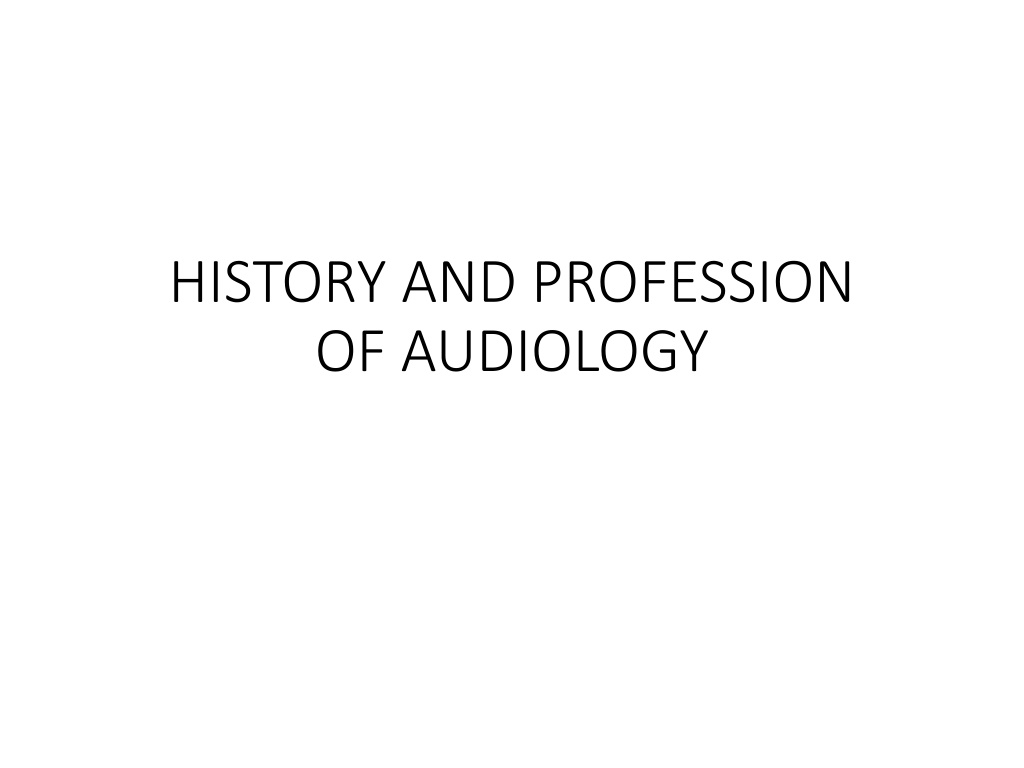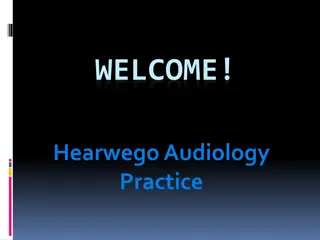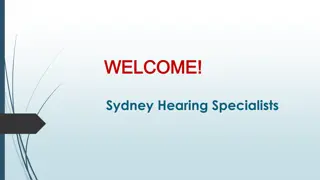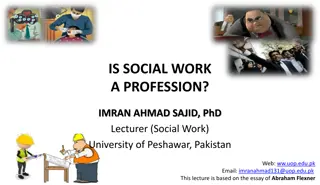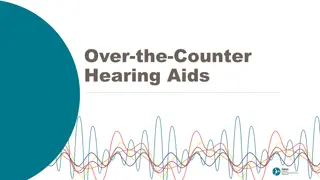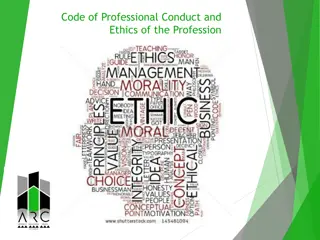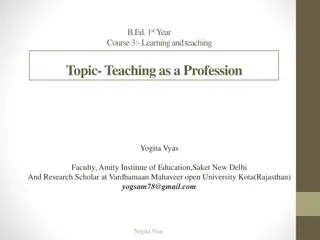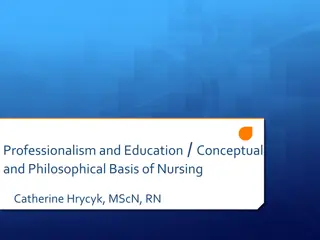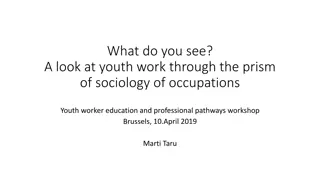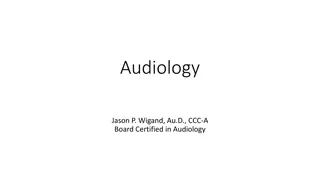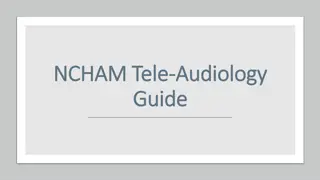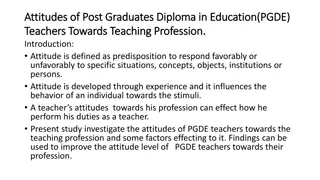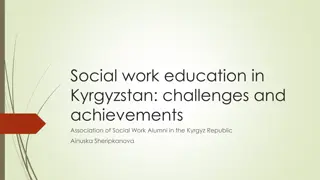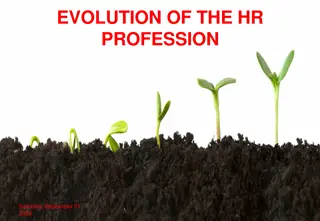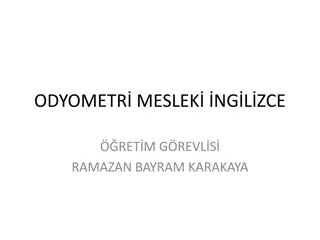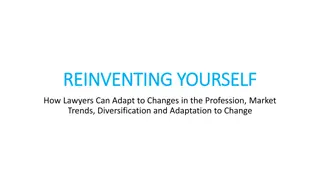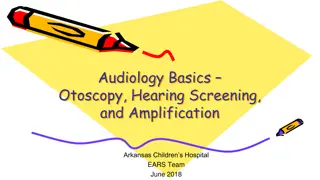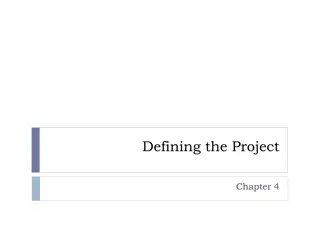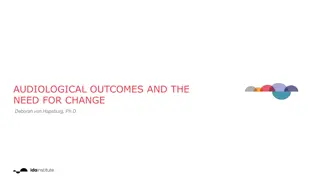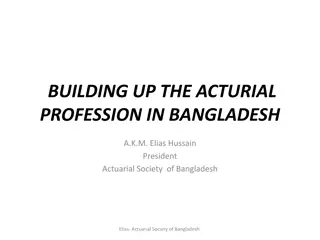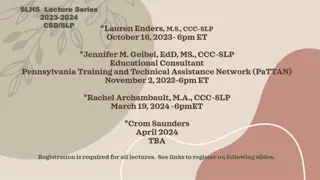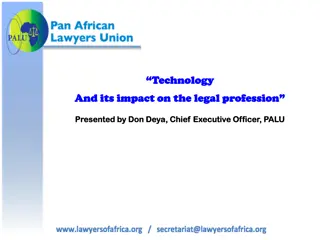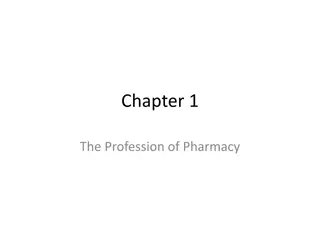Evolution and Scope of Audiology Profession
Post-WWII saw the establishment of aural rehab centers and the development of hearing aid fitting protocols by Raymond Carhart. Audiology encompasses evaluating hearing and balance disorders, rehabilitating through various interventions like hearing aids and cochlear implants, and preventing hearing loss. Audiologists work in diverse settings like private practices, clinics, hospitals, and with various professionals such as ENT physicians and occupational therapists. Key skills include patient communication, diagnostic expertise, and providing support to patients and families.
Download Presentation

Please find below an Image/Link to download the presentation.
The content on the website is provided AS IS for your information and personal use only. It may not be sold, licensed, or shared on other websites without obtaining consent from the author.If you encounter any issues during the download, it is possible that the publisher has removed the file from their server.
You are allowed to download the files provided on this website for personal or commercial use, subject to the condition that they are used lawfully. All files are the property of their respective owners.
The content on the website is provided AS IS for your information and personal use only. It may not be sold, licensed, or shared on other websites without obtaining consent from the author.
E N D
Presentation Transcript
HISTORY AND PROFESSION OF AUDIOLOGY
1940s Post WWII, aural rehab centers were created for soldiers with hearing loss Raymond Carhart developed protocol for fitting hearing aids that was used for many years Carhart also developed a graduate training program at Northwestern University for Audiology
AUDIOLOGY SCOPE OF PRACTICE Evaluation, (re)habilitation and prevention of: HEARING LOSS VESTIBULAR (BALANCE) DISORDERS
Evaluate Behavioral (subjective) hearing evaluations Hearing Screening / Newborn Hearing Screening Electrophysiological (objective) hearing evaluations OAEs, ABR, ECochG, ENOG, etc Balance Testing ENG/VNG, Rotary chair, Posturography, etc CAPD Testing Interoperative testing Refer to other professionals
Rehabilitate Hearing Aids Classroom Acoustics Assistive Listening Devices Counseling/Education Cochlear Implants Case Management Aural/Auditory Rehab and Training Cerumen Management Vestibular Rehab/CRP
Prevention Industrial/military hearing conservation programs identify and remove hazardous noise identify/track hearing loss provide hearing protection - earplugs/earmuffs educate/train
WHERE DO WE PRACTICE? Private Practice Hearing and Speech Clinic Physician Practice Universities Hospitals Hearing aid manufacturers Schools Industry
With whom do Audiologists work? Speech-Language Pathologists ENT physicians (Otolaryngologists), pediatricians, and other doctors Educators Occupational Therapists Psychologists Optometrists OSHA and Industrial Safety Managers Asha.org 8
Required Skills Relate to patients Explain technology developments Communicate diagnostic results Approach problems objectively Provide support to patients and families Patience and good listening skills Asha.org 9
Education Since the early 2000's, a clinical doctorate in audiology (Au.D.) has replaced the Master s degree as the entry-level degree for those who pursue clinical practice. 10
The Au.D. Clinical doctorate First 3 years: course work Science and math-based courses such as Neurology, Anatomy/Physiology, Acoustics, Statistics Clinic-prep courses such as Assessment, Hearing Aids, Aural Rehabilitation Clinic placements 4th Year: 12-month externship/residency Supervised full-time clinic setting Capstone Project Research project/dissertation Systematic review/thesis 11
Professional Requirements State Licensure Specified number of clinical hours Continued Education Hearing Aid Dispensing License (some states) Praxis National Audiology Exam Agree to Code of Ethics ASHA CCC-A or ABA Certification (optional) 12
HEARING SCREENINGS AND HEARING SCREENINGS AND EVALUATIONS EVALUATIONS
What are we measuring? Indirect evaluation of the Middle Ear
How do we evaluate? Acoustic Immitance The application of sound and pressure to the Ear Drum and then measuring how much sound energy is absorbed or reflected
OUTER AND MIDDLE EAR SCREENING
All children should be screened; especially children with the following characteristics: A first episode of acute otitis media prior to 6 months of age Infants who have been bottle fed Children with craniofacial anomalies, stigmata, or other findings associated with syndromes known to affect the outer and middle ear, Ethnic populations with documented increased incidence of outer and middle ear disease (e.g., Native American and Eskimo populations) A family history of chronic or recurrent OME Those in group day care settings and/or crowded living conditions, Those exposed to excessive cigarette smoke Children diagnosed with sensorineural hearing loss, learning disabilities, behavior disorders, or developmental delays and disorders.
Basic Hearing Evaluation A brief explanation
Audiometer Stimuli Tone Microphone Noise CD Player Soundbooth Transducers Soundfield/Freefield speakers Supra-aural/Circumaural Headphones Insert phones Bone conductor
Air Conduction Degree and configuration of loss Bone Conduction Type of loss Speech Functional communication
The Audiogram A graph that shows an individuals type and degree of hearing loss Frequency Low Pitch to High Pitch Loudness Soft to Loud
The Audiogram Audiogram: A graph that shows an individuals type and degree of hearing loss as measured during the hearing test.
Basic Types of Hearing Loss A brief explanation
Conductive Hearing Loss A barrier to sound present in the outer or middle ear Normal inner ear function On the audiogram = Normal bone conduction scores with Abnormal air conduction scores Can be a temporary or a permanent hearing loss which may be corrected medically or surgically
Sensorineural Hearing Loss Impaired inner ear Normal outer and middle ear sound pathway Problem in cochlea or beyond On the audiogram = Abnormal bone conduction scores with abnormal air conduction that follows bone scores Nerve hearing loss which is permanent with no medical or surgical options to correct the loss
Mixed Hearing Loss Abnormal outer, middle, and inner ear function On the audiogram = Abnormal bone conduction scores and abnormal air conduction which is at least 15 dB worse than bone scores Temporary or permanent hearing loss with possibility of medical or surgical procedures for the conductive portion but not the nerve portion
HEARING SCREENING: NEWBORNS Universal Newborn Hearing Screening Program
Statistics National 3-6/1000 births will have some type of hearing loss South Carolina 60,000-70,000 live births/yr 120-140 fail screening 1/1000 have permanent hearing loss 60-70 have profound hearing loss 10% of those have auditory neuropathy 12-14 have auditory neuropathy 50% of babies with HL at birth do not have high risk factors they are well babies
High Risk Factors family history of hereditary childhood sensorineural hearing loss bacterial meningitis Apgar scores of 0 4 at 1 minute or 0 6 at 5 minutes in utero infection, such as cytomegalovirus, rubella, syphilis, herpes, and toxoplasmosis mechanical ventilation lasting 5 days or longer craniofacial anomalies, including those with morphological abnormalities of the pinna and ear canal stigmata or other findings associated with a syndrome known to include sensorineural and/or conductive hearing loss birth weight less than 1,500 grams (3.3lbs) parent/caregiver concern regarding hearing and/or developmental delay hyperbilirubinemia at a serum level requiring exchange transfusion, head trauma associated with loss of consciousness or skull fracture ototoxic medications, including but not limited to the aminoglycosides, used in multiple courses or in combination with loop diuretics recurrent or persistent otitis media with effusion for at least 3 months.
